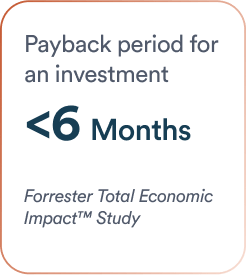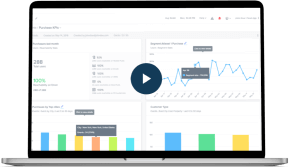Email deliverability makes or breaks email marketing.
Even a beautifully written email is useless if it never reaches the inbox. Recent data show that roughly 1 in 6 legitimate marketing emails fail to reach inboxes. These emails get filtered as spam or simply bounce.
It has become increasingly challenging to bypass spam filters these days. Especially when 45.6% of all email traffic is classified as spam, you need robust deliverability to reach target recipients.
This article looks into deliverability and aggregates ways and methods you can practically use to improve email deliverability in your business. Let’s take a deep dive and explore why exactly emails fail to reach their intended inboxes.
What Is Email Deliverability?
Email deliverability is the ability of an email to reach a subscriber’s inbox. This is different from the delivery rate. The latter measures the percentage of sent emails that are accepted by recipients’ mail servers (i.e., not bounced).
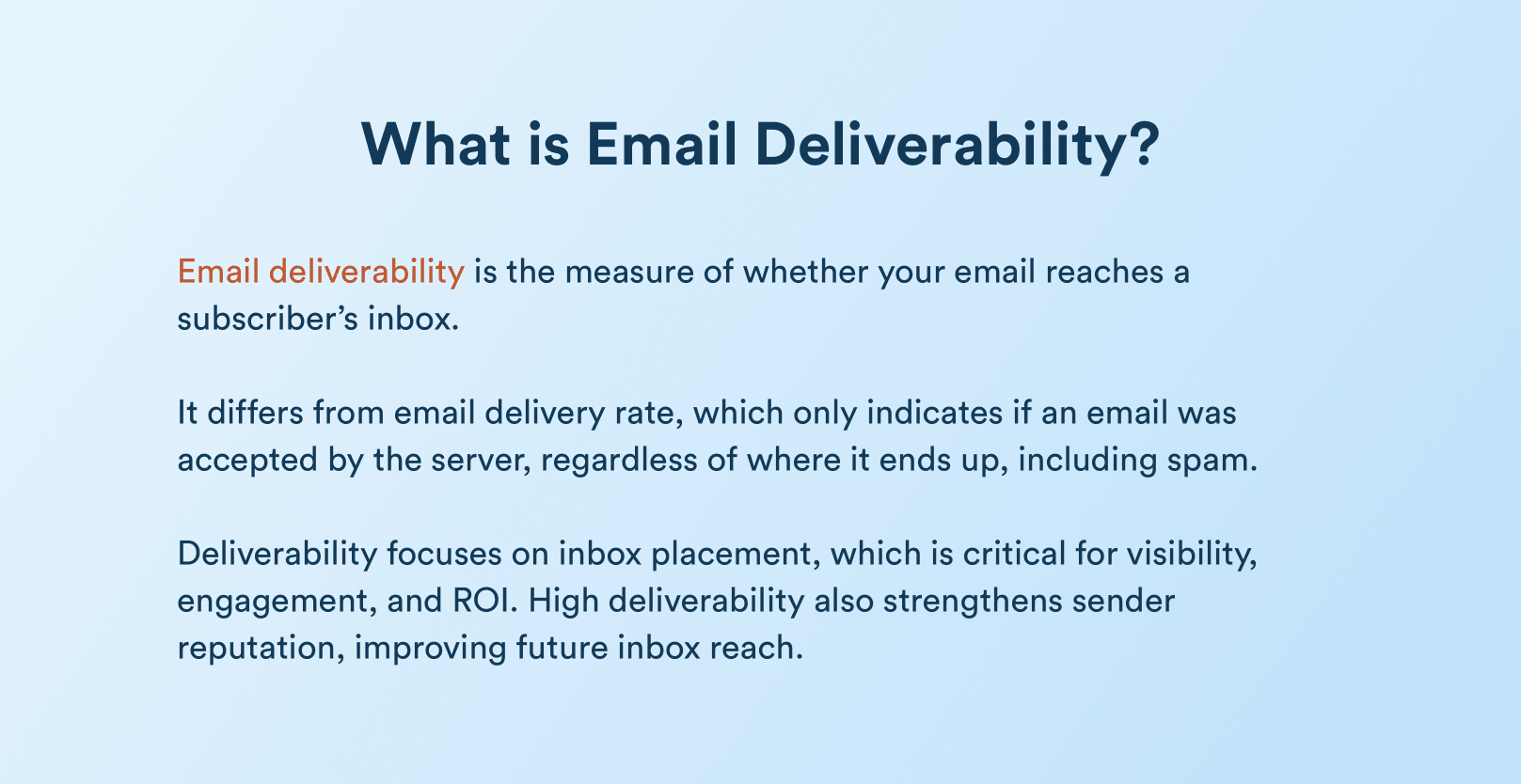
Delivery rate is like the package arriving at the recipient’s front door; deliverability is whether the package ends up inside their house (inbox) or on the porch (spam folder). There’s a difference between the two. Interestingly, many marketers often use these words interchangeably. In a survey, around 50.9% of marketers thought the delivery rate refers to the percentage of emails that reach the inbox, which in reality is the email deliverability rate. Only 12.3% knew that the delivery rate is the percentage of emails delivered to any folder.
When you have strong email deliverability, you have a better chance of achieving engagement and ROI from your campaigns. While optimizing for deliverability, you inherently maximize your ROI opportunities.
Interestingly, there’s no direct metric that allows a marketer to measure “deliverability score”. However, you can infer it through inbox placement test, engagement rates, spam complaint rates, and more.
As a benchmark, if more than 95% of emails arrive in the inbox, it’s an excellent deliverability. If it’s between 85% and 94%, it’s good deliverability. Rates below 85% usually suggest problems that you need to solve.
Why Email Deliverability Matters in Marketing
When emails hit inboxes, subscribers see them, which drives opens, clicks, conversions, and revenue. If deliverability is poor, even a strong promotion or important transaction email may be missed entirely. Each missed email means a missed opportunity and potential revenue drain.
Email deliverability also affects a sender’s reputation. If your emails often bounce or are flagged as spam, mailbox providers take note. Over time, a poor reputation becomes a vicious cycle: fewer opens lead to lower engagement signals, which trigger more filtering or blocking.
Conversely, good deliverability and engagement mutually reinforce each other. It suggests that these emails are wanted, helping you reach inboxes the next time. Due to this, email marketers emphasize a permission-based list with a high number of opens and CTR.
Key Metrics to Track Email Deliverability
While “deliverability” itself is partly inferred, marketers monitor several key metrics to measure and improve deliverability health:
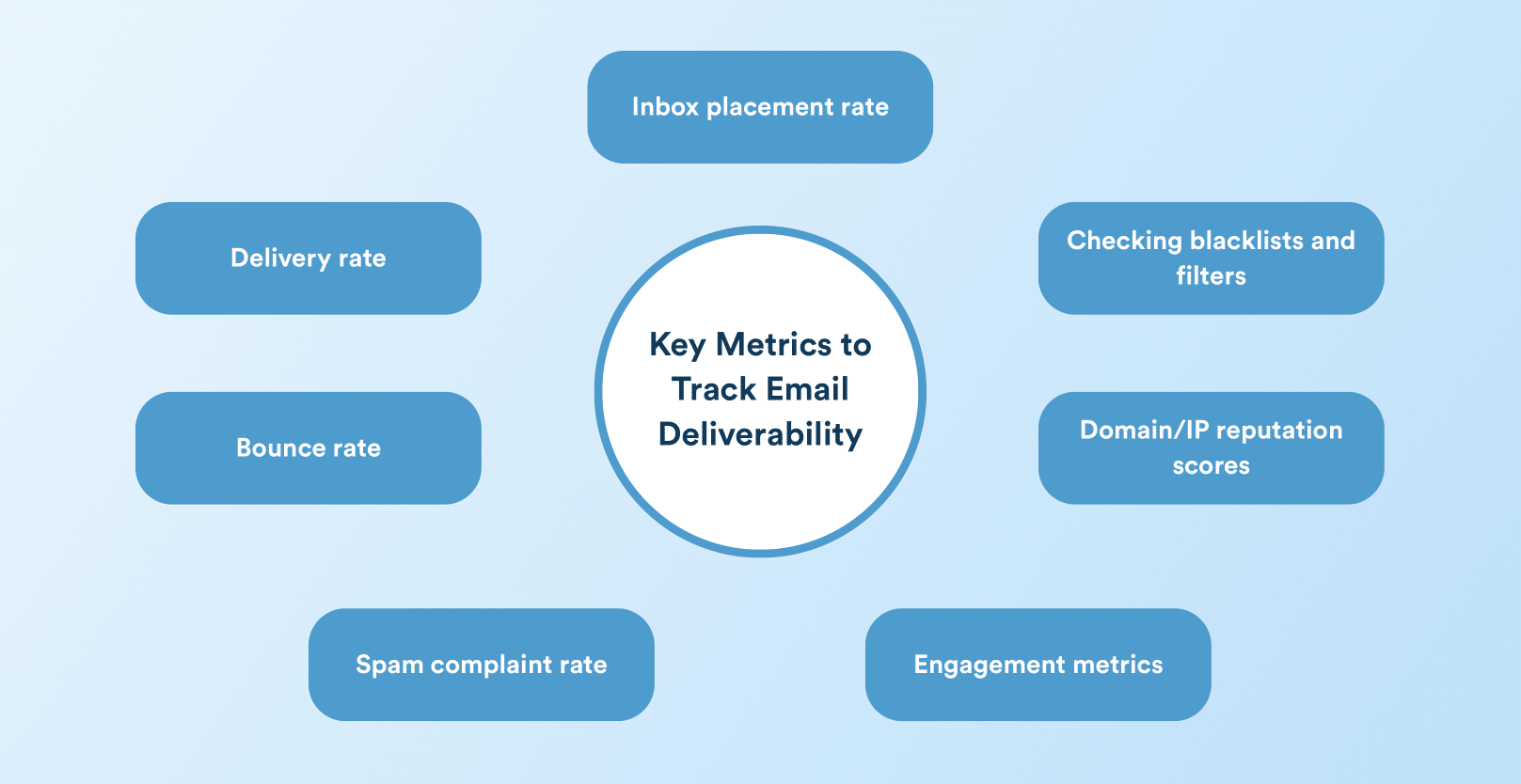
- Inbox Placement Rate: In ideal conditions, more than 95% of delivered emails should end up in the inbox. Such programs and services measure this by sending test emails and checking folder placement.
- Delivery Rate: It’s the percentage of sent emails that landed in any folder. This means, even when an email lands in spam, it’s included in the delivery rate measurement.
- Bounce Rate (Hard vs. Soft): Bounces hurt deliverability. Soft bounces are temporary issues that suggest a full mailbox or a server down. These are acceptable to some extent. However, hard bounces are a red flag since they’re permanent. It’s advisable to keep hard bounces below 0.5% as they could damage your reputation. These occur due to invalid or mistyped email addresses. Clean your email lists regularly to prevent these issues.
- Spam Complaint Rate: This is the percentage of recipients who hit “mark as spam.” Even a complaint rate of over 0.1% can result in being blocked. Aim to keep spam complaints extremely low, ideally under 0.05%. Provide a clear unsubscribe link and send only solicited content.
- Engagement Metrics: Opens, clicks, replies, forwards, and other email marketing metrics indirectly influence deliverability. Mailbox providers monitor user engagement, such as higher open rates and clicks, to assess quality. An email newsletter with a strong open rate, say 20–30% for marketing emails, is less likely to be treated as spam. Track your open and click rates as health indicators; a sudden drop might suggest that your emails are landing out of sight (or in spam).
- Domain/IP Reputation Scores: Monitor your domain’s sending reputation via tools like Google Postmaster, Microsoft SNDS, or third-party services. A rising sender score or reputation index is correlated with improved deliverability.
- Blacklists and Filters: Check if your sending IP or domain is on any major blacklists. A blacklist hit will stop emails in their tracks.
What Is a Good Email Deliverability Rate?
The importance of email deliverability is increasing as regulations become stringent. In 2024, Google and Yahoo introduced strict requirements, which required bulk senders to implement the Sender Policy Framework (SPF), DomainKeys Identified Mail (DKIM), and Domain-based Message Authentication, Reporting, and Conformance (DMARC) policies.
One-click unsubscribe became mandated via RFC 8058, with compliance required within two days of the request. Due to these changes, marketer are adapting and adjusting their email practices to get a reasonable deliverability rate.
In the present context, an email deliverability rate above 95% is considered excellent.
The open rate depends on the context. Typically, transactional emails have a higher open rate compared to promotional campaigns.
Learn how to keep your campaigns compliant and your emails out of spam folders. Read the full guide to Yahoo and Gmail’s latest email deliverability updates.
Factors Affecting Deliverability and Ways to Fix Them
Several interrelated factors determine whether your email reaches the inbox. Each factor can either help or hurt your deliverability:
IP and Domain Reputation
If you suddenly send emails from a new IP address, Inbox Service Providers (ISPs) may suspect spam and filter you heavily. Likewise, a bad reputation from past senders will lower your trust.
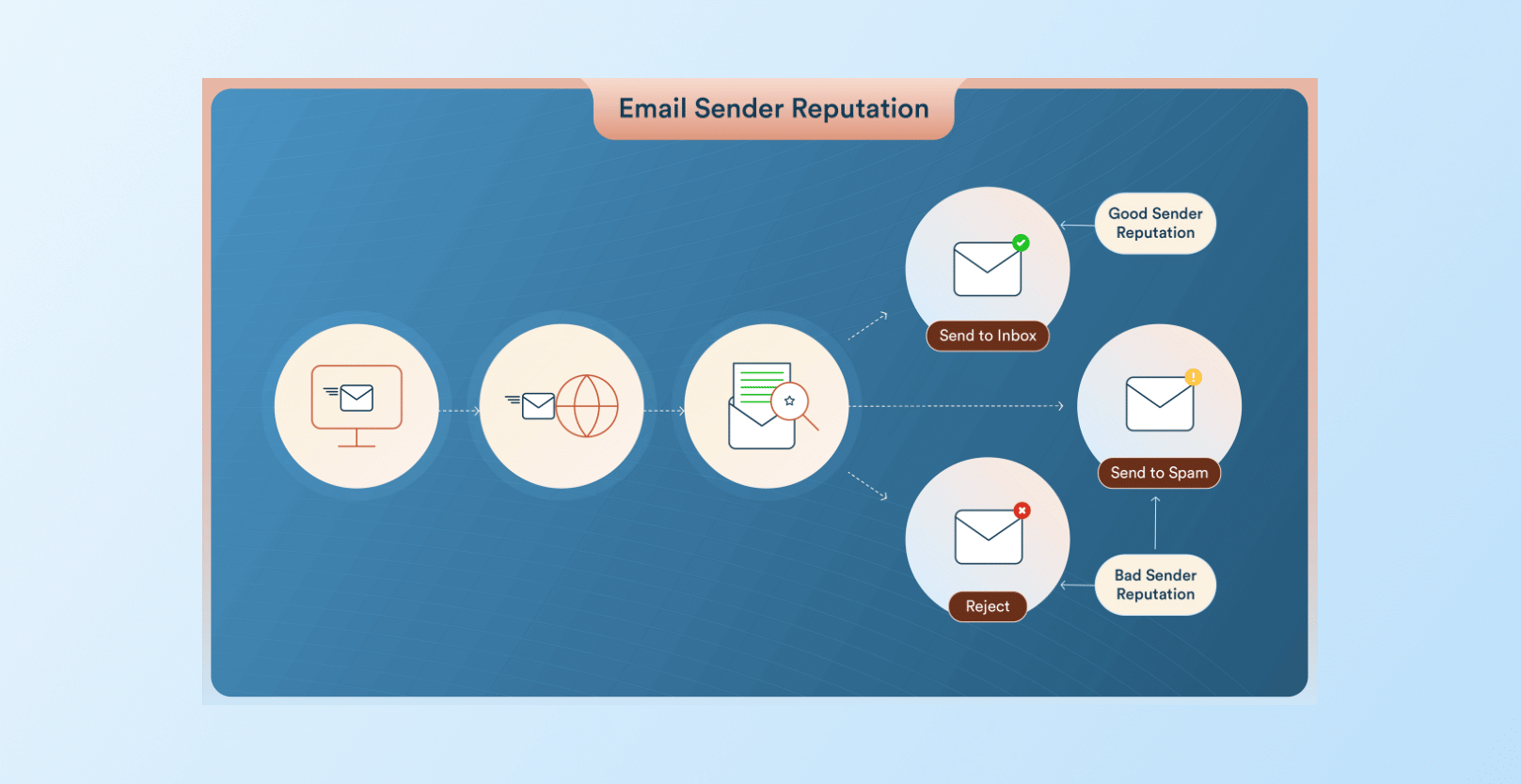
How to fix:
There are three things you need to do:
- Monitor Campaign Performance: Assess performance based on positive signals, such as a consistent sending calendar, a high delivered-to-sent rate, high open rates, and user engagement actions. Look out for negatives such as unsubscribes, spam complaint rate, or other negative user actions like deleting emails without opening them, filtering emails to trash, or listing your address in personal block lists.
- Monitor Reputation and IP Health: Use a platform like CleverTap to check if your domain is on any block list. If you’re in Google’s ecosystem, Google Postmaster Tools will help you assess your reputation. In Microsoft’s ecosystem, access IP Stats via Microsoft SNDS to get insights into your email sender reputation.
- Measure Actual Inbox Placement: Conduct seed testing to determine the actual inbox placement. CleverTap lets you do it seamlessly.
Sender Authentication
ISPs require proper authentication to trust you.
This means setting up SPF, DKIM, and DMARC records correctly. Missing or misconfigured auth leads to blocked emails if not fixed.
How to fix:
Publish accurate SPF and DKIM DNS records for your sending domain, and implement a DMARC policy. Start with a “none” policy (p=none) to monitor your email traffic and identify legitimate senders before moving to more strict policies like “quarantine” (p=quarantine) or “reject” (p=reject)
Authenticating each message helps build trust and reduces the likelihood of being caught by spam filters. CleverTap’s email marketing platform includes guidance on setting up SPF, DKIM, and DMARC to protect sender reputation.
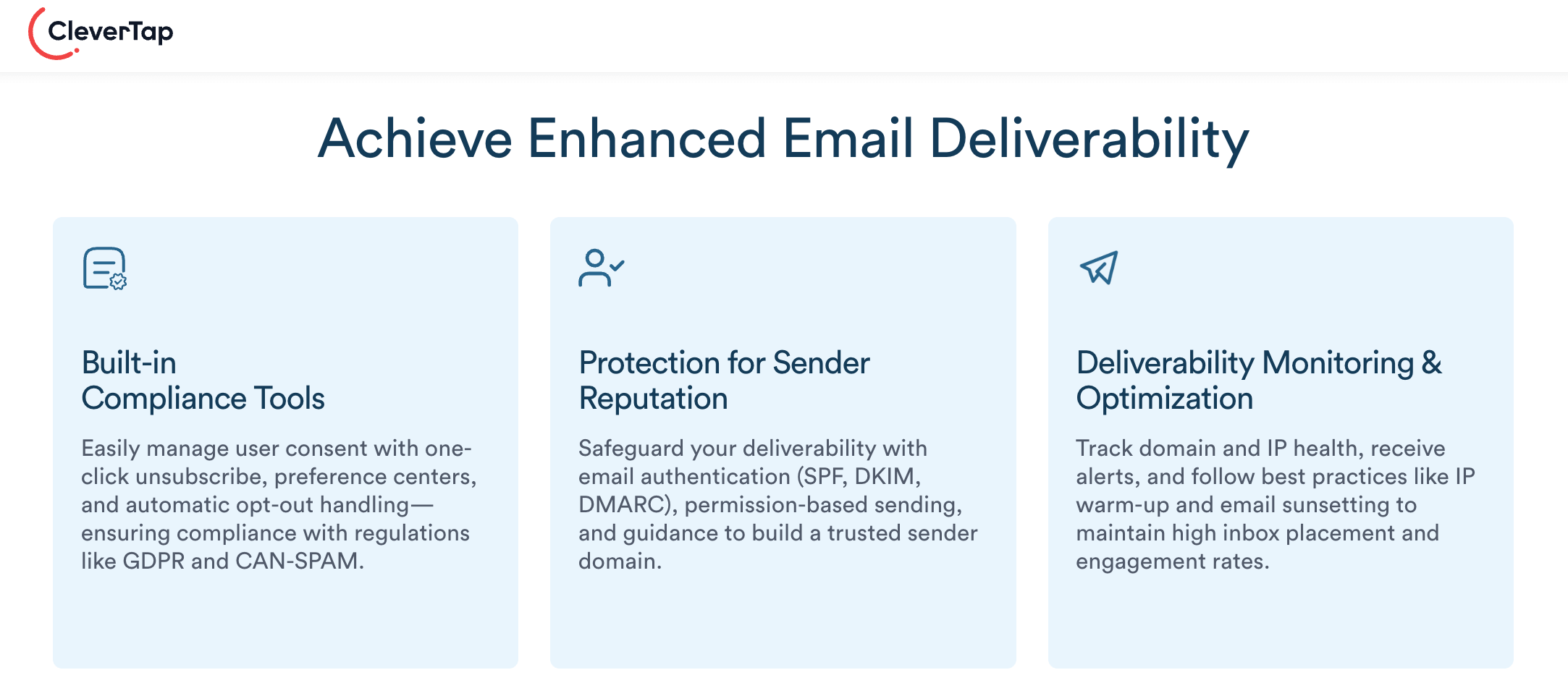
Email Content
Content can trigger spam filters. Overuse of spammy words like “Free!!!”, “Buy now!”, “Click here” or excessive punctuation and capitalization raises flags. Poor HTML with broken code, excessive images compared to text, and missing alt text also appear spammy.
How to fix:
Use clear, legitimate language and formatting. Avoid known spam trigger phrases; don’t write in all caps or with too many exclamation points.
Keep a healthy text-to-image ratio and test your email’s spam score before sending. Ensure every link is valid and there are no broken URLs. It’s best to use relevant and valuable content that your recipients expect will perform better.
Learn all the best practices to write email content in our guide on email copywriting.
List Hygiene and Segmentation
High bounce rates from old or invalid addresses in your email list or sending to unengaged users harm deliverability. Similarly, if you blast the wrong message to uninterested segments, it leads to low engagement and spam complaints.
How to fix:
There are two things you need to do to fix:
- Regularly Clean Your List: Remove hard bounces immediately, and periodically suppress addresses that haven’t engaged in months. Implement double opt-in so only real, interested users join.
- Segment Your Audience: Send targeted content to each group by demographics or behavior. Email segmentation increases engagement and sender reputation over time. For example, send different offers to recent buyers vs. lapsed customers.
Sending Frequency and Timing
Sudden spikes in sending volume or erratic schedules look suspicious. ISPs watch for consistent sending patterns. Likewise, sending at odd hours (like 3 AM) reduces opens and engagement.
How to fix:
Maintain a steady sending cadence and avoid long gaps or sudden surges in your sending frequency. If you need to scale up, for example, during a significant sale, increase volume gradually. Leverage send-time optimization to improve opens.
CleverTap’s “Best Time” feature, for instance, uses historical data to pick optimal send times.
Engagement Signals
Major inbox providers actively track how users engage with your emails. Good signs, such as opens, replies, and forwards, tell them your email is wanted. Bad signals do the opposite.
How to fix:
Write compelling subject lines and personalized content to increase open rates. Encourage clicks and replies when appropriate. It’s best to clean your list of chronically inactive users as they drag down engagement metrics.
Below is a quick reference table summarizing common deliverability issues, their root causes, and fixes:
| Issue | Likely Cause | Fix |
| High Bounce Rate | Dirty/old email list with invalid or mistyped addresses | Clean and validate your list. Remove invalid addresses and use double opt-ins. |
| Low Open Rate | Unengaging subject or unknown sender; poorly timed send | Improve subject lines, use a recognizable “From” name, and send to warm segments at optimal times |
| Spam Folder Placement | Missing authentication, poor sender reputation, or spammy content | Set up SPF, DKIM, and DMARC properly. Remove spam trigger words and formatting. |
| Spam Complaints | Sending unsolicited or irrelevant emails; confusing unsub opt-out | Use permission-based lists and clear opt-in methods. Include an easy unsubscribe link |
| Sudden Reputation Drop | A spike or security issue | Pause campaigns and check for compromised accounts. Then, resume with a warm-up while reviewing content. |
Top Email Deliverability Best Practices
Below are some best practices for email deliverability for email marketers.
Warm Up Your IP and Domain Gradually
When starting on a new IP or domain, begin with small sends and gradually increase them over time. For example, send to your most engaged subscribers first, then slowly increase the number of recipients.
Consistent volume growth over weeks establishes a good reputation. Sudden spikes can trigger spam filters. Tools like Google Postmaster and CleverTap’s dashboards enable you to track IP health during the warm-up period.
When Apna, a professional networking platform, built an email channel from scratch with Clevertap, the team developed a custom warm-up plan to ensure optimal function. It initially followed a phased approach, with trigger-based campaigns and personalized communication. The Apna team achieved nearly 30x growth in a year.
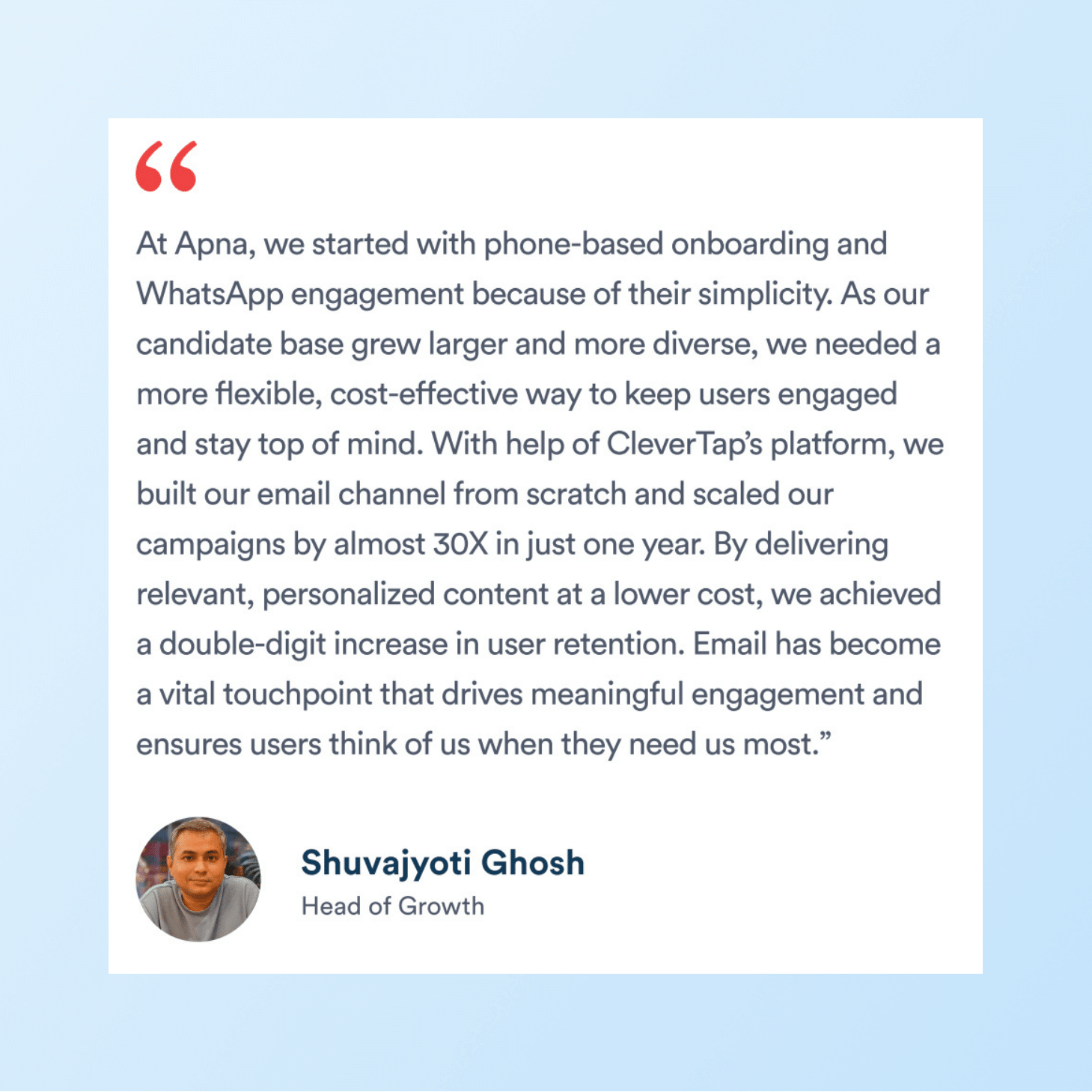
Read the full case study here.
In the same vein, the Booky team, which helps people find restaurants, needed help to improve their email open rates. Their rates had dropped by 50% due to a mistake in an email blast they had sent out.
With CleverTap, the team received deliverability consultations that included monthly reports, as well as IP warm-up and configuration services. After advanced A/B testing, they were able to increase their open rates by 36%.
Maintain Clean, Permission-Based Lists
Use confirmed opt-ins (double opt-in) and never purchase lists. Remove invalid or outdated addresses to maintain low bounce rates.
Focus on quality over quantity: a smaller, engaged list is better than a large unengaged one. Regularly scrub your database and delete hard bounces immediately, and suppress users who haven’t opened emails in six months or more. Permission-based sending not only complies with laws (GDPR, CAN-SPAM) but also maintains deliverability.
Personalize Content to Increase Open Rates
Personalization, in the form of using names or past-purchase information, increases open rates and decreases the number of unsubscribes. Emails that resonate with the recipient’s interests get more clicks, signaling ISPs to favor your mail.
However, when it comes to email blasts, personalization is a challenge. You need the right set of tools for scalability and, most importantly, a clear understanding of the user journey.
This is precisely what Ixigo, a premium travel platform, wanted to do to increase its open rates. CleverTap’s platform offered the Funnel feature to identify user drop-offs from one stage to another. Using this, Ixigo was able to fix these friction points through personalized email campaigns. In addition, the company optimized the onboarding experience and user engagement to achieve a 54% open rate on emails.
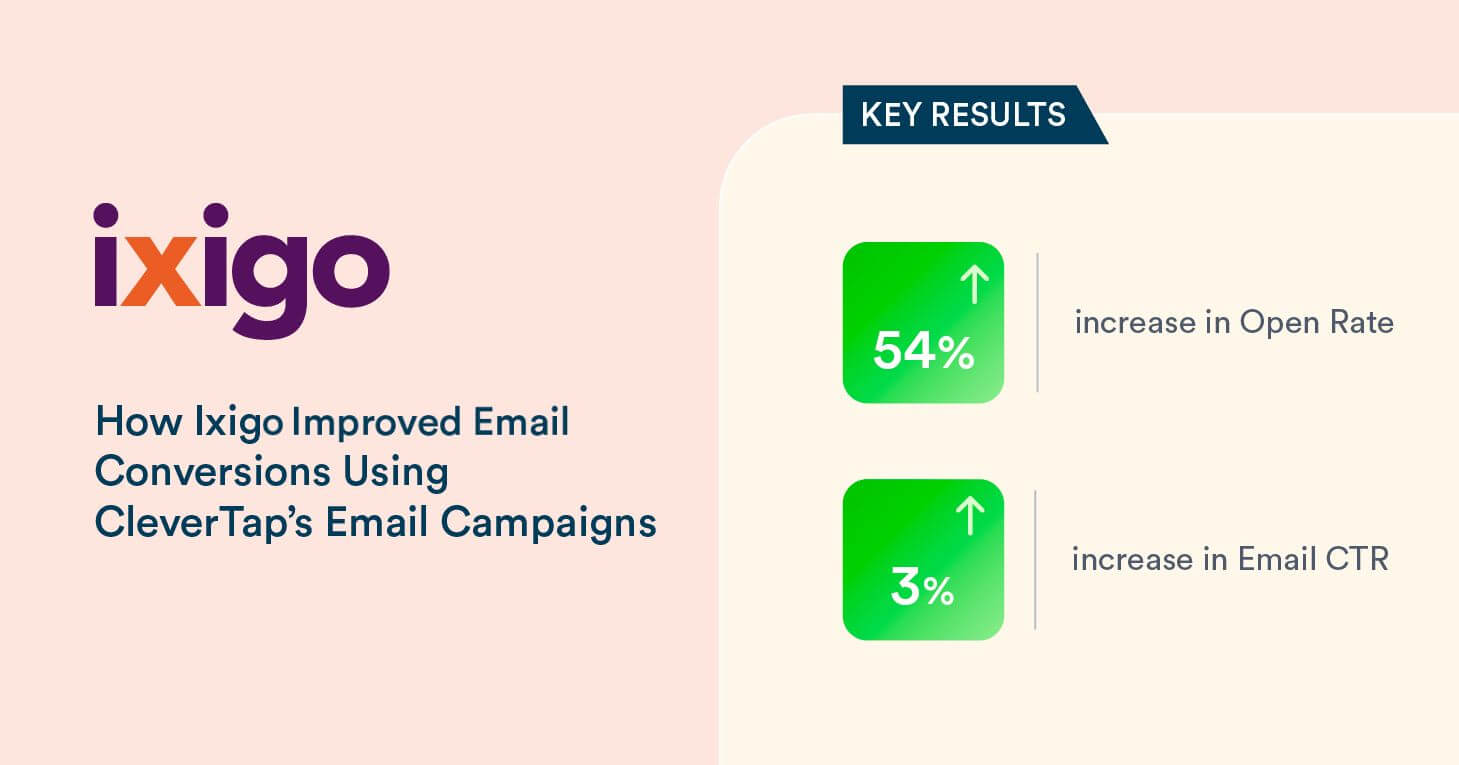
Use Real-Time Deliverability Monitoring Tools
Use technology to stay informed. Make use of built-in dashboards or third-party tools that track deliverability signals. For example, CleverTap’s analytics enable the tracking of delivery rates, bounce rates, and unsubscribe rates in real-time, allowing you to react if metrics trend downward quickly.
With CleverTap, you can text inbox placement and spam core. Use these insights to adjust content or sending patterns before problems escalate.
How CleverTap Helps Improve Email Deliverability
CleverTap’s customer engagement platform is built with deliverability in mind. It provides real-time tools and features to help you monitor and improve your inbox placement. The platform tracks opens, clicks, bounces, and unsubscribes in real time through an intuitive dashboard. You can see exactly how each campaign performs by segment, which helps spot deliverability issues early.
CleverTap enables advanced user segmentation based on past behavior, demographics, RFM score, and other relevant factors. It allows you to send highly relevant emails to each segment, helping you increase open rates while maintaining strong deliverability. Moreover, Clever AI predicts optimal send times and frequency for each user. Recipients are more likely to read these emails when they arrive, driving engagement signals that ISPs love.
Overall, the platform combines technology and expertise to address deliverability at every stage. Start exploring CleverTap and get in touch with the team if you’re struggling to improve email deliverability.
Make email a valuable growth channel with CleverTap. See it in action.
Kiran Pius 
Leads Product Launches, Adoption, & Evangelism.Expert in cross-channel marketing strategies & platforms.
Free Customer Engagement Guides
Join our newsletter for actionable tips and proven strategies to grow your business and engage your customers.



